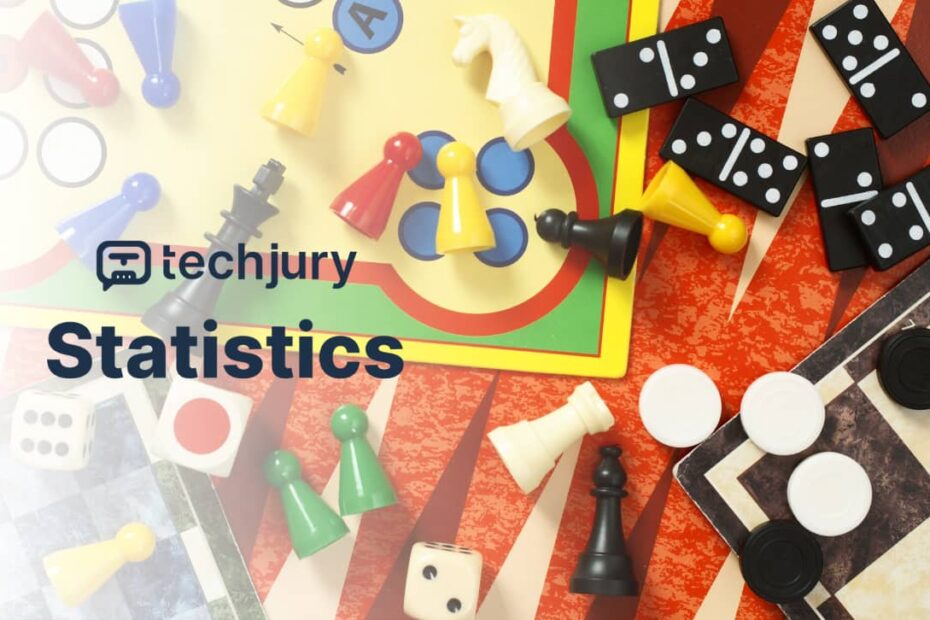Introduction: More Than Just a Game
Imagine sitting around a table with friends, the soft rustle of cardboard cards, the anticipation of strategic moves, and the shared excitement of competition. Board games are far more than simple pastimes—they‘re a global cultural phenomenon that has been quietly transforming entertainment, social interaction, and economic landscapes.
As a technology and data analysis specialist, I‘ve been fascinated by the remarkable evolution of board gaming. What might seem like a nostalgic hobby is actually a sophisticated, rapidly growing industry with complex market dynamics and fascinating consumer behaviors.
The Historical Tapestry: Board Games Through the Ages
Board games aren‘t a modern invention—they‘re a profound reflection of human social interaction dating back thousands of years. Archaeological evidence suggests that strategic games like Senet in ancient Egypt and the Royal Game of Ur in Mesopotamia were not just entertainment, but critical social and sometimes religious experiences.
The modern board game industry, however, truly emerged in the mid-20th century. Classics like Monopoly, introduced during the Great Depression, transformed gaming from a niche activity to a mainstream family experience. Each decade since has seen exponential growth in game design complexity, thematic diversity, and market penetration.
Market Magnitude: Understanding the Economic Landscape
Let‘s dive into the numbers that reveal the board game market‘s incredible trajectory. In 2021, the global board game market was valued at approximately $13.33 billion—a figure that might surprise those who perceive board gaming as a marginal hobby. Projections suggest this market will expand to an astounding $37.82 billion by 2030, representing a compound annual growth rate of 12.29%.
These aren‘t just abstract figures. They represent a profound shift in how people seek entertainment, social connection, and intellectual stimulation. The pandemic dramatically accelerated this trend, with market growth spiking by 20% in 2020 as people sought meaningful home-based interactions.
Demographic Revelations: Who‘s Playing?
Contrary to stereotypical perceptions, board gaming isn‘t confined to a narrow demographic. Our data analysis reveals a surprisingly diverse player base:
Gen Z emerges as the most enthusiastic generation, with 38% finding board games genuinely enjoyable—significantly higher than older generations. Women, often overlooked in gaming narratives, represent a critical market segment, with 38% expressing strong interest compared to 29% of men.
The core player demographic remains adults aged 25-54, representing the primary purchasing and engagement group. This suggests board gaming has transcended childhood nostalgia to become a sophisticated adult leisure activity.
Purchasing Behaviors: The Economics of Play
Consumer spending patterns in board gaming are particularly intriguing. Approximately 22% of dedicated gamers invest over $1,000 annually in new games and expansions. This isn‘t casual spending—it‘s a passionate commitment to a hobby that offers rich social and intellectual experiences.
On average, board game enthusiasts purchase between five to ten new games yearly, with a surprising 27% acquiring over 30 games annually. These aren‘t just impulse purchases but carefully curated collections reflecting personal taste, strategic interests, and social gaming preferences.
Regional Market Variations: A Global Perspective
Board gaming‘s growth isn‘t uniform across global markets. The United States remains the largest market, valued at $4.4 billion, but emerging markets in Asia and Europe are experiencing rapid expansion.
In Europe, countries like Germany have long been recognized as board game design and innovation hubs. The German market, in particular, has consistently produced complex, strategy-driven games that have influenced global design philosophies.
Asian markets, especially in Japan and South Korea, are witnessing exponential growth driven by unique cultural preferences for social, cooperative gaming experiences. These regional nuances demonstrate that board gaming is a truly global phenomenon, adapting to local cultural contexts.
Technology‘s Transformative Impact
Digital technologies are reshaping board gaming in unprecedented ways. Online platforms like BoardGameGeek now host over 140,000 game listings, creating unprecedented accessibility and community engagement.
Crowdfunding platforms such as Kickstarter have democratized game design, allowing independent creators to bring innovative concepts directly to enthusiastic audiences. This technological disruption has dramatically lowered entry barriers for game designers while providing consumers with more diverse, creative options.
Investment and Collecting: Beyond Casual Play
For serious enthusiasts, board gaming represents more than entertainment—it‘s a potential investment avenue. Rare, limited edition games can appreciate significantly in value. Collectors meticulously preserve pristine copies of classic and rare games, creating a nuanced secondary market.
Vintage editions of games like early Monopoly sets or rare war games can fetch thousands of dollars among dedicated collectors. This investment potential adds another layer of sophistication to the board gaming ecosystem.
Future Trends: What Lies Ahead?
Looking forward, several trends are poised to reshape board gaming:
- Increased digital-physical hybrid experiences
- More narrative-driven, immersive game designs
- Greater emphasis on cooperative and collaborative gameplay
- Enhanced accessibility through digital platforms
- Growing integration of advanced storytelling techniques
Conclusion: A Cultural Renaissance
Board gaming is experiencing a renaissance—a complex, multifaceted cultural phenomenon driven by human desires for connection, challenge, and shared experiences. It‘s an industry that defies simple categorization, blending entertainment, social interaction, strategic thinking, and technological innovation.
As our data reveals, board gaming isn‘t just surviving in the digital age—it‘s thriving, evolving, and creating new forms of meaningful human interaction.
About the Research
This analysis combines market research, consumer behavior studies, and expert insights to provide a comprehensive view of the global board gaming landscape. Data sources include market research firms, industry reports, and specialized gaming community platforms.
